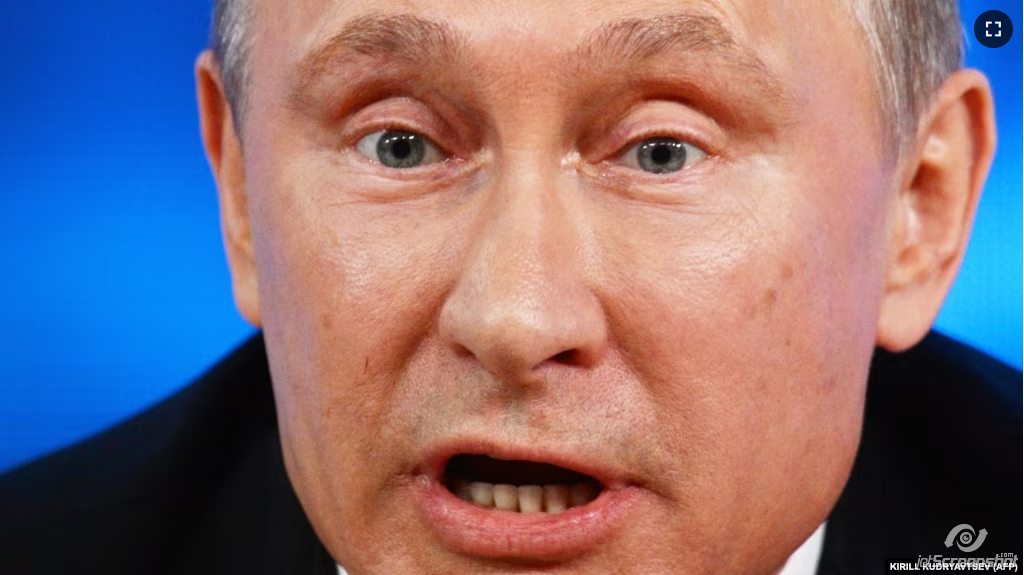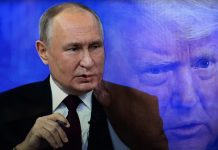By Ksenia Kirillova, for Jamestown Foundation
In recent months, it has been rare to find a popular Russian political show that does not include calls for a nuclear strike against Ukraine and the West. At the forefront of this “nuclear hysteria” is Vladimir Solovyov, Russia’s so-called “chief propagandist.” Solovyov does not hesitate to attack even pro-war “experts” who are reluctant to turn Ukraine into a radioactive wasteland or launch strikes against North Atlantic Treaty Organization members. In response, his fellow propagandists defend themselves by clarifying that they would not mind sacrificing a hypothetical Ivano-Frankivsk, but they draw the line at contaminating Kyiv with radioactive waste due to their plans to annex it (Smotrim.ru, August 20).
The danger of such propaganda does not merely lie in its aggressive content but also in the emotional backdrop against which it is presented. While advocating for global annihilation, figures like Solovyov depict Russia as a victim: a nation with a noble but timid disposition, seemingly unable to take even the most essential measures for self-defense (YouTube, April 13). This propaganda constructs a narrative in which the Kremlin confronts an ominous threat that can only be stopped by a nuclear strike, leaving no room for alternatives. This portrayal fosters the perception that Moscow’s adversaries are waging war on foreign soil, while Russia itself hesitates to strike even on its “own land”—a reference to Ukraine in the propagandists’ language (Smotrim.ru, August 20).
On the one hand, this propaganda encourages Russian citizens to accept the inevitability of nuclear warfare and the potential necessity of a tactical strike for survival. On the other hand, it fosters discontent toward the Kremlin authorities, portraying them as feeble, defenseless and incapable of safeguarding their populace in such circumstances.
Similar dynamics unfolded between 2018 and 2020 when Russian President Vladimir Putin’s approval ratings experienced a steady decline. In early 2019, only 33 percent of survey respondents expressed confidence in Putin (BBC News Russian, January 25, 2019); by late May, his approval ratings had dwindled to 31.7 percent (Svoboda, May 25, 2019). Subsequently, during the COVID-19 pandemic, trust in the Kremlin leader reached a historic low, plummeting to 23 percent (Levada.ru, July 29, 2020).
Officially, this decline was attributed to Putin’s unpopular pension reforms. However, while this may be part of the story, the public’s grievances extended beyond the realm of social issues. In the summer of 2021, Russian sociologists identified components of a burgeoning imperial-conservative sentiment, including a desire for a strong leader, restoration of national order and military victory. This trend was linked to the sharp resurgence in popularity of Soviet dictator Joseph Stalin. It was suggested that the “imperial demand of the population was fulfilled in the realm of media, but not in real life” (Moskovskij Komsomolets, August 28, 2021). In simpler terms, Putin’s waning popularity among the Russian population largely stemmed from his inability to confront the very threat that he himself further exacerbated.
This same phenomenon is responsible for the initial surge of support for the war among the majority of Russians. Under the influence of propaganda, the perceived Western threat had progressively grown over time, culminating in a sense of relief among Russians at the outset of the invasion. Many believed that the “threat would be eliminated,” finally prompting Putin to embody the role of a “strong leader” (see EDM, March 1, 2022).
Presently, the Russian president once again finds himself in the same precarious situation as in the past, when initiating a full-scale invasion was the only means to bolster his plummeting popularity. Although a fresh decline in ratings has yet to be observed, even staunch Kremlin supporters concede that the level of apprehension among Russians is on the rise and its character diverges from that observed in the later Soviet years. Their observations indicate that the “Soviet anxiety” had a mobilizing quality that aided in surmounting crises, whereas the prevailing state of society today could gravitate toward despondency or hopelessness (T.me/russica2, August 20).
Another consequence stemming from Russia’s nuclear hysteria could be difficulties with conducting a new wave of mobilization—with the prospects for such a campaign already appearing incredibly uncertain (T.me/russica2, August 20). Kremlin propagandists constantly repeat that launching a nuclear strike against adversaries could safeguard the lives of Russian soldiers. Opting instead to redeploy Russians to the frontlines could heighten dissatisfaction within the population.
This awareness seems to have reached the authorities in Moscow, becoming more evident in their strategic focus on directing primary propaganda efforts not at adults, but at children (see EDM, August 18). In the spring, independent journalists tried to summarize the impact of propaganda on schoolchildren. Their findings vary significantly depending on the school, the stance of teachers and each child’s individual perceptions. Some youngsters express fatigue with hearing about Russian greatness, while others eagerly embrace radical sentiments and employ offensive language against “geopolitical adversaries” (Оpendemocracy.net, April 19).
Nonetheless, irrespective of the extent to which Russian children succumb to this propaganda, it is clear that the crisis of trust in Putin is upon the current adult generation in Russia. Nevertheless, while this could offer an opening for the Russian opposition, should this opportunity go untapped, as it did in 2019, the Kremlin’s response to such a crisis could lead to a fresh phase of military escalation and increased repression at home.
By Ksenia Kirillova, for Jamestown Foundation





